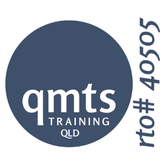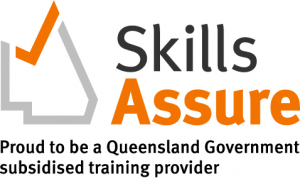| COURSE CODE: | MAR30924 |
|---|---|
| LOCATION: | QMTS Training QLD, Brisbane Campus, Royal Queensland Yacht Squadron, 578 Royal Esplanade, Manly Qld 4179 |
| FACE TO FACE COURSE DURATION: | On-campus full-time for 5 weeks |
| FACE TO FACE COURSE DATES: | 2026 Block 1: Monday 02/03/26 – Tuesday 07/04/26
2026 Block 2: Monday 22/06/26 – Friday 24/07/26 2026 Block 3: Monday 12/10/26 – Friday 13/11/26 |
| DISTANCE LEARNING COURSE DURATION: | You will have 12 months to compete your studies.
Depending on your motivation to complete your studies, this time can be reduced to as little as 3 months. |
| SUBSIDISED FUNDING: | Career Start Queensland Government funding is available for this course. For more information, and to find out if you are eligible, please contact the QMTS Training QLD administration team on 07 3186 6930. |
COURSE UNITS
| Unit Code |
Unit of Competency |
| BSBLDR301 | Support effective workplace relationships |
| HLTAID011 | Provide First Aid |
| MARB029 | Perform routine maintenance on a vessel up to 24 metres |
| MARB060 | Slip or dock a vessel and maintain hull on a vessel up to 80 metres |
| MARF060 | Apply basic survival skills in the event of vessel abandonment |
| MARF028 | Follow procedures to minimise and fight fires on board a vessel |
| MARF029 | Meet work health and safety requirements |
| MARF030 | Survive at sea using survival craft |
| MARH036 | Manage and maintain a navigational watch on board vessels up to 80 metres |
| MARH037 | Plan and navigate a passage for a vessel up to 80 metres |
| MARH017 | Use wheelhouse equipment for safe navigation |
| MARI006 | Observe regulations to ensure safe operation of a vessel up to 80 metres |
| MARJ007 | Monitor environmental management on a vessel |
| MARK008 | Manoeuvre a vessel up to 24 metres within near coastal waters |
| MARN009 | Perform seamanship operations on board a vessel up to 24 metres |
COURSE OUTCOME
MAR30924 Certificate III in Maritime Operations (Master up to 24 Metres Near Coastal)
Careers & Pathways:
The Maritime Industry within Australia has identified vocational outcomes and/or areas of local demand in transport, construction, shipping, and tourism sectors around the coast of Australia.
Employment Pathway:
- Command a vessel <24 m long
- Act as chief mate on a vessel <45 m long
- Act as deck watchkeeper on a vessel <100 m and <3000 GT
- Act as chief mate on a vessel <100 m and <3000 GT in inshore waters
- Undertake the duties and perform the functions of a General-Purpose Hand NC and Master (Inland waters) NC
Higher qualification Pathways:
MAR40324 Certificate lV in Maritime Operations (Master up to 45 metres Near Coastal)
MAR50320 Diploma of Maritime Operations – Master less than 100 metres – Master less than 500GT – Watchkeeper Deck
COURSE DELIVERY
LICENSING / REGULATORY INFORMATION
This qualification is required to obtain an AMSA certificate of competency as a Master up to 24 metres NC as defined in Marine Order 505.
AMSA certification will require:
- Achieving MAR30924 Certificate III in Maritime Operations (Master <24 m Near Coastal)
- Long Range Operator Certificate of Proficiency (or higher) issued by ACMA.
- Meeting the medical and eyesight requirements specified in the Standards for the medical assessment of near coastal seafarers available on the AMSA website
- An assessment by an AMSA approved assessor using the AMSA Mandated Practical Assessment (AMPA).
- Evidence of sea service
Sea service requirement:
With AMSA approved task book:
At least 120 days qualifying sea service on a commercial vessel ≥7.5 m long working in a deck capacity.
Without AMSA approved task book:
At least 360 days qualifying sea service on a vessel ≥7.5 m long (of which at least half must be on a commercial vessel), working in a deck capacity or working both in a deck capacity and an engineering capacity.
ENTRY REQUIREMENTS
A general command of spoken and written English, as well as the ability to write a simple report is required.
As a safety consideration, QMTS recommends all students be physically fit to carry out all the roles and responsibilities of a Master less than 24 meters Near Coastal as defined in Marine Order 505.
Students should also be able to swim (any stroke) a minimum of 25 metres fully clothed.
ADMISSION REQUIREMENTS
Language, Literacy, and Numeracy
It is a requirement of this course that all enrolling students undertake a language, literacy and numeracy (LLN) assessment.
Technology
As the delivery of the course relies on access to the aXcelerate Student Learner Portal, students must have access to their own computer, laptop or iPad (with Microsoft Office 365 software).
Free Wi-Fi is available in our classrooms during face to face training.
Students will be required to possess navigational instruments for chart work, including a parallel ruler, calculator (we suggest Casio FX series), 2B pencils, eraser, compass and protractor. If required, you can place your order for Navigational Resources with our Customer Service team.
Students will require basic computer skills to complete the course without disadvantage. This includes how to access the internet, download documents, save files to a hard drive and upload files into the Student Learner Portal. On enrolment, all students receive a Student Learner Portal Learner Guide.
ENROLMENT
When enrolling into a QMTS Training course it is a requirement that all enrolment documentation is received before enrolment confirmation can occur. The required documents and information are listed below:
- Online Enrolment Form
- Enrolment Induction Checklist
- Copy of Driver’s Licence (front and back) or Passport
Please also note that Students will be required to provide QMTS Training with their Unique Student Identifier (USI) before enrolment can be completed.
ASSESSMENTS
A combination of Practical, Oral and Theory assessments will be undertaken. The assessments may consist of written projects, picture portfolios, quizzes, assignments and exams.
All students will access all on-line assessments via their aXcelerate Student Learner Portal.
Practical Assessment
Students attending a face-to-face course will complete practical assessments throughout their course.
For distance learning students, once all online theory assessments are successfully completed, they will need to attend a scheduled two-day practical assessment to complete the certificate requirements.
Private Practical Assessment
Private practical assessments are available at a cost to students who require a private practical assessment outside the scheduled sessions provided. Please refer to our Client Handbook, or call the QMTS Training customer service team, for more information.
RECOGNITION PROCESS
Learners can have their competency from prior learning and work experience recognised in this qualification through the following arrangements:
Recognition of Prior Learning (RPL)
RPL is recognition of prior learning or skills obtained from previous study or work/life experience.
Learners, who through prior learning or experience believe they have gained competence in any of the skill areas, may be granted RPL upon substantiation of that claim.
QMTS Training offers RPL on enrolment and the trainer will work with the student to define the potential for a successful application process.
NB: RPL does not give the student a discount in course fees.
Credit Transfer
Students may also apply for a credit transfer upon enrolment.
Learners who have evidence in the form of AQF certification from any other RTO or authenticated VET transcripts issued by the Registrar or from an AQF authorised issuing authority
for units of competency relevant to this qualification will be given credit upon enrolment.
For more information about QMTS Training Recognition
Process please refer to the Client Handbook or phone QMTS Training on 07 3186 6930.
For more information about QMTS Training recognition process please refer to the Client Handbook or phone QMTS Training on 07 3186 6930.
We also provide higher qualifications for a Master up to 45m, Master up to 45m Upgrade, Marine Engine Driver Grade 2 and Marine Engine Driver Grade 3.
If you’re just getting started in the Maritime Industry look at completing your Shipboard Safety Skill Set Certification as the first step to Marine Safety.




